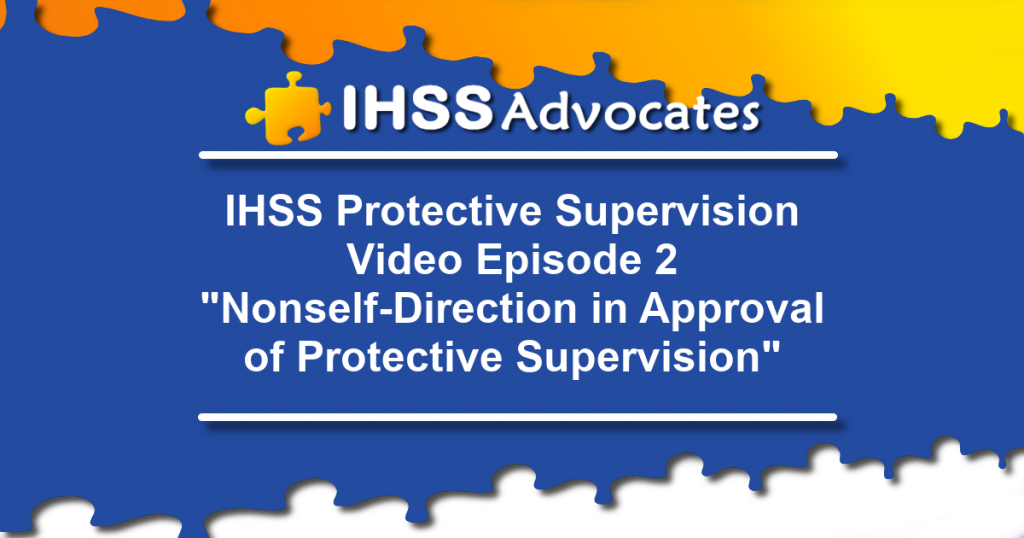Nonself-Direction in Approval of Protective Supervision
In this IHSS video we discuss the term nonself-direction and how it affects the approval of Protective Supervision for families with developmentally disabled children.
If you need any assistance, you are welcome to join our support group at: IHSS Advocacy Group
Key Points:
Q: What is the definition of nonself-direction?
A: The definition of nonself-direction can be found in All County Letter 15-25 and states: For the purpose of Protective Supervision eligibility, nonself-direction is an inability, due to mental impairment/mental illness, for individuals to asses danger and the risk of harm, and therefore, the individuals would most likely engage in potentially dangerous activities that may cause self-harm.
The determination of nonself-direction based upon a mental impairment is step one in a four step assessment process in the granting of Protective Supervision benefits.
A person must be both mentally impaired or mentally ill and nonself-directing to be eligible for Protective Supervision. It is not sufficient for someone to just be mentally impaired/mentally ill, there must also be evidence that he/she is nonself-directing. This policy is based on the court ruling in the Marshall v. McMahon (1993) 17 Cal. App. 4th 1841, and Calderon v. Anderson (1996) 45 Cal. App. 4th 607, cases.
Furthermore, Protective Supervision regulations are based on Welfare and Institution Code 12300(b). The Manual of Polices and Procedures (MPP) 30-700 contains the following sections that are specifically applicable to the assessment, and authorization of Protective Supervision.
MPP 30-757.17 states: Protective Supervision consists of observing recipient behavior and intervening as appropriate in order to safeguard the recipient against injury, hazard, or accident.
.171 adds: Protective Supervision is available for observing the behavior of nonself-directing, confused, mentally impaired or mentally ill persons only.
Documentation supporting nonself-direction can be collected from many sources.
- Doctors can fill out IHSS forms such as the “Assessment of Need for Protective Supervision (SOC 821)“, discussing the mentally impaired child’s nonself-direction.
- Parents can keep a journal of their mentally impaired child’s nonself-directing activity.
- IEP, Regional Center, and therapist reports relating to the mentally impaired child can be reviewed for examples of nonself-directing behavior.
- If needed, treating clinicians and/or school personnel can provide eyewitness examples of the mentally impaired child’s nonself-directing behavior.
Contact us below if you’ve been denied Protective Supervision and would like to speak to one of our advocates for free.
Click the button below to get a free advocate evaluation of your child’s IHSS Protective Supervision case.
If you need any assistance, you are welcome to join our support group at: IHSS Advocacy Group
Watch Episode #1
Advocates discuss why families are denied protective supervision and an option to consider in your appeals process.
Watch Episode #3
How to establish that your nonself-directing & mentally-impaired child is likely to engage in potentially dangerous activities.

